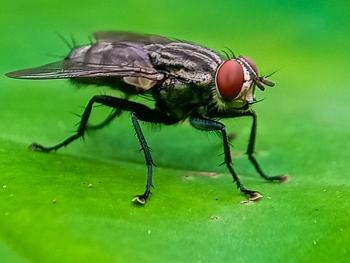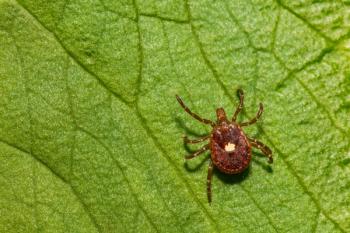
Goat parasite control requires more than cattle protocols
With the increasing numbers of meat goats in the United States, many bovine practitioners face questions about goat healthcare targeted toward internal parasite treatment and control.
With the increasing numbers of meat goats in the United States, many bovine practitioners face questions about goat healthcare targeted toward internal parasite treatment and control.
Applying control programs used for cattle to goats will not work. Cattle do get clinical diseases from internal parasites, particularly from Ostertagia sp. infestations. Parasite control in cattle is usually performed for economic returns due to increased calf gains, and there are no problems with cattle parasites being resistant to anthelmintics. By contrast, internal parasites in goats can be a life-threatening condition, and anthelmintic resistance is widespread. This makes the control of parasites in goats essential, yet more complicated. Goat producers usually want veterinarians to give them a deworming schedule including how often to deworm and with what product. They also would like this schedule to work every year in all situations. Unfortunately, this is impossible due to anthelmintic resistance problems. Veterinarians need to urge goat producers to get away from anthelmintic use, and move toward management of pastures and better culling practices. Veterinarians should not give producers advice about parasite control without knowledge of the farm environment and management. This requires physically visiting the farm and performing diagnostic tests.
Although sheep and goats get numerous types of parasites, Haemonchus contortus is the most clinically significant nematode parasite and most important with respect to anthelmintic resistance. The following control recommendations are for Haemonchus, a voracious bloodsucker that can cause severe anemia. If goats are showing clinical signs of parasitism (weight loss, diarrhea and/or bottle jaw) but are not significantly anemic, other parasite species should be suspected and diagnostic tests performed to determine which parasite species is the major problem.
Diagnostics
To make treatment and control recommendations, it is essential to know what dewormers are effective on a farm and to what degree. There are two ways to determine this. The first requires performing quantitative fecal exams. Eggs per gram (EPG) of feces should be calculated on fecal samples taken before deworming then repeated in seven days to 10 days after deworming. Dewormers that do not decrease the EPG by at least 90 percent are considered ineffective. However, the actual effectiveness percentage should be recorded for all dewormers tested because even those partially effective might still be used in some situations.
The second method of resistance determination is a test offered through the University of Georgia's parasitology lab. Resistance patterns to all dewormers can be determined with one test, which is less expensive than running multiple fecals for several dewormers as previously described.
Control programs
Parasitism in goats is not an anthelmintic deficiency; it is a pasture problem. A common saying is "permanent pasture perpetuates parasitism". Even if stocking rates are suitable for proper forage, if goats are allowed to graze an entire pasture without rotation, deadly infestations of Haemonchus can result. Haemonchus is prolific egg producer and has a relatively short prepatent period. It also is more heat tolerant than Ostertagia. This leads to rapid buildup of contamination, especially in summer, when the prepatent period is shorter. There is also a periparturient rise in EPG, which necessitates some special considerations around parturition. The heat tolerance of Haemonchus combined with mild winters make haemonchosis a problem year round in some parts of the country.
Strategic deworming
Strategic deworming programs were developed for Ostertagia problems in cattle and are of limited use with Haemonchus infestations in small ruminants. Strategic deworming requires deworming when most of the parasites are in animal and not in environment (winter for Haemonchus). However, this is difficult in areas with mild winters because some larva survive the season. One type of strategic deworming program for goats is to deworm does three weeks before the first kid is due and repeat every three to four weeks until the last kid born is three weeks old. This should minimize problems associated with the periparturient rise in parasite egg output that occurs around this time.
Salvage deworming
The FAMACHA method is the most common salvage deworming program currently being recommended but should only be used for Haemonchus infestations. This program is designed to slow development of anthelmintic resistance by selective treatment and increased refugia of susceptible parasites, which increases the number of sensitive genes in the gene pool and dilutes the number of resistant genes in the parasites. It also selects animals that are genetically resistant to parasites.
The program calls for examination of the mucous membrane color of the lower eyelids and comparison of the eyelid color to a chart. Animals with scores correlating to pale mucous membrane color are treated; those with more normal pink color are not treated. This process is performed every two weeks to four weeks depending on season and weather conditions.
Partially effective drugs are used in combination on animals that are selected as needing treatment. Highly effective products should be reserved for emergency use only. This also leaves a refugia of susceptible parasites to mate with resistant ones.
Animals requiring repeat treatments should be culled, which eventually leads to selection of parasite resistant animals. And since those animals showing the worst clinical signs have the biggest parasite burdens and shed the most parasite eggs, culling these animals helps decrease pasture contamination.
Smart Drenching is recommended in conjunction with FAMACHA". As previously stated, the resistance patterns for a farm must be known.
Some of the Smart Drenching recommendations: Administer anthelmintics at two times the cattle dose for the heaviest animal except for levamisole and moxidectin; only use injectable and pour-on products orally; deliver the drug over tongue into pharynx; dry lot animals for 12 to 24 hours and fast before deworming; repeat administration in 12 hours; if not using the FAMACHA program, use one class of dewormer for at least one year or until it doesn't work (do not rotate monthly).
Pasture management
Sound pasture management is a must for any deworming program to be successful long term. This consists of minimizing stocking rates and the use of safe pastures. Safe pastures are those used for forage crops, those grazed by horses or cattle, or those not grazed by small ruminants for three months in the warm season and six months in the cool season. Intensive pasture rotation systems that maximize forage utilization and providing browse to goats also help. Cattle and horses are not susceptible to Haemonchus, and they remove infective larvae from pastures as they graze. So co-grazing these livestock species with goats helps lessen the parasite burden on a pasture.
Keeping resistant parasites off the farm is critical. The fastest way to get anthelmintic resistance on a farm is to buy it. Newly purchased animals might harbor resistant parasites, so quarantine of newly purchased animals and deworming them with dewormers from three different classes at once is recommended. They should then be turned out onto a contaminated pasture so any resistant parasites remaining in the animal are diluted with refugia on the pasture.
Research into new treatments
With complete resistance on the horizon, alternative methods of parasite control are being sought. Tannins in forage (fresh or hay) to decrease egg hatching and infective larvae development (ex. Sericea lespedeza); feeding nematode trapping fungi; copper oxide wires; breed selection; and vaccines are all being investigated.
Dr. Navarre works as an extension veterinarian with Louisiana State University's Department of Veterinary Science.
Newsletter
From exam room tips to practice management insights, get trusted veterinary news delivered straight to your inbox—subscribe to dvm360.



